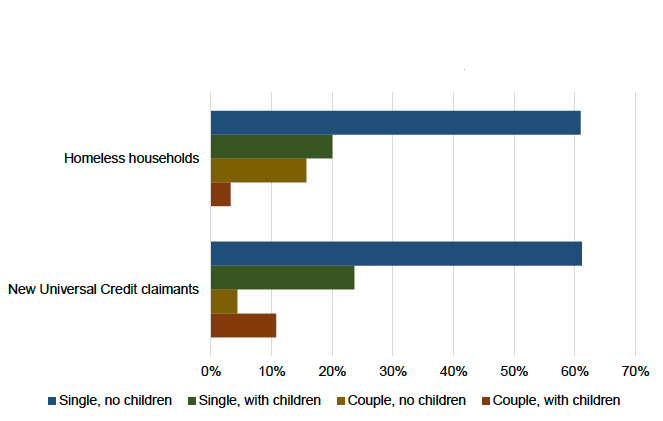Homelessness and Universal Credit: research report
A range of literature indicates that various features of Universal Credit can result in homelessness and a number of correlations between homelessness and Universal Credit can be observed in the data.
4. The five-week wait
New claimants for UC must wait for five weeks before their first payment. Advance loans are available, but these must be paid back from future benefit payments or other income. Since all new claimants are subject to the five-week wait, the impacts are widespread, particularly with the onset of Covid-19 which led to a dramatic increase in the UC caseload. We estimate that the five-week wait reduced expenditure on UC in Scotland by £144 million in 2019/20 relative to a situation where claimants received their first payment immediately. This figure increases to a projected £205 million in 2020/21.[21]
The five-week wait can push many households into financial difficulties, particularly as the initial claim period is already likely to be one of financial turbulence, often following job loss or another change of circumstance.[22] Research published by the Joseph Rowntree Foundation in 2020 found a strong statistical link between UC and destitution, with the five-week wait cited as the most problematic aspect of Universal Credit, coupled with the need to repay advances. Similarly, in a survey by TUC, 71% of UC claimants reported that the wait was problematic.[23]
The five-week wait has been linked to rent and mortgage arrears in addition to debt and foodbank use.[24] Claimants with low levels of savings, those with higher housing costs, and those with more immediate rent or mortgage payment deadlines are particularly vulnerable. According to a report by the House of Commons Work and Pensions Committee, half of all UC claimants have no income in the three months prior to their claim, although though those who have claimed during the COVID-19 pandemic are more likely to be more financially resilient.[25]
The profile of households affected by the five-week wait closely reflects the profile of households assessed as homeless or at risk of homelessness, as shown in Figure 10. In both groups of households, 61% of households in 2019/20 were single-person households, while between 20% and 24% were single-parent households. Couples represented smaller proportions of both homeless households and new Universal Credit claimants.

Sources: DWP, Stat-Xplore; Scottish Government, August 2020, Homelessness in Scotland: 2019-20
Contact
Email: spencer.thompson@gov.scot
There is a problem
Thanks for your feedback